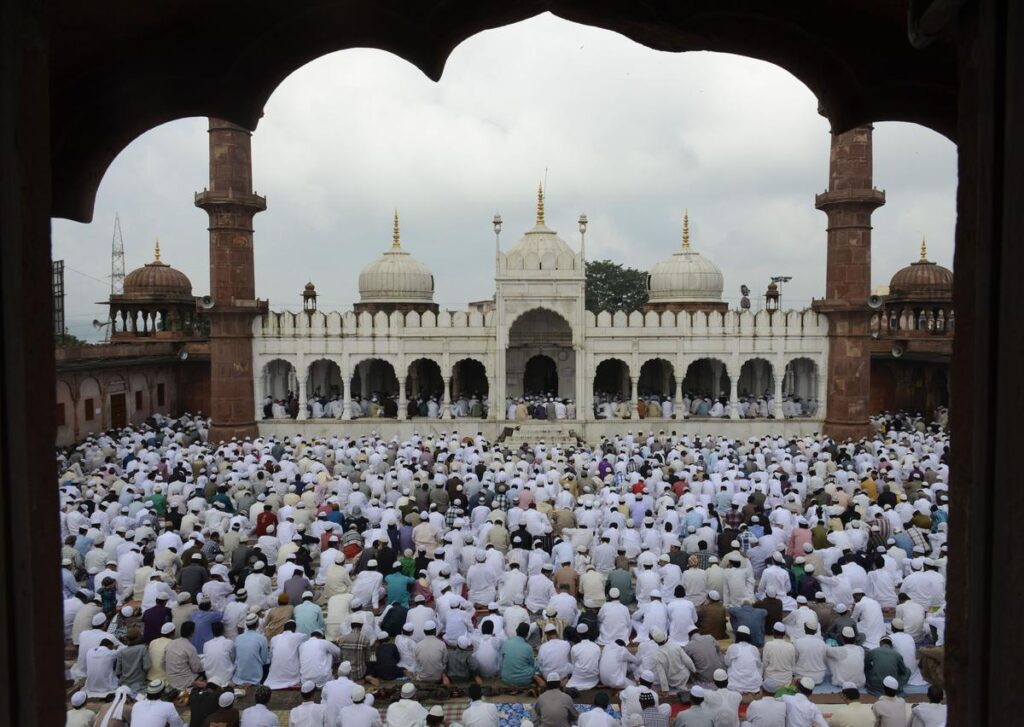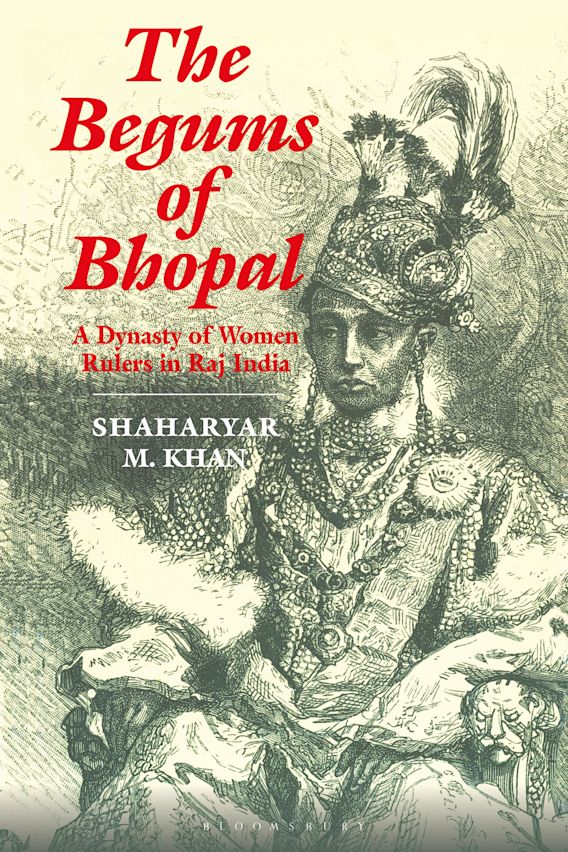Bhopal, MADHYA PRADESH :

Tracing the history of a city where four Muslim women ruled for over 107 years
As the capital of one of the largest States, Bhopal has flown under the radar. It has little of the financial muscle associated with Mumbai, even less historicity to rival that of Kolkata. It has neither the earthiness of Patna nor the niceties of Lucknow. Yet, Bhopal in its own understated way has enough accomplishments to fill up a mantelpiece.
Among all the States, cities and towns of imperial and modern India, Bhopal has done more for women empowerment than probably all States put together. True, back in the 13th century Delhi had a woman ruler, Raziya Sultan, who ruled from 1236 to 1240, but little else.
Bhopal has been ruled by four Muslim women for 107 years. The Begums of Bhopal did not shy away from calling themselves the Nawabs of Bhopal.
Shaharyar Khan, Shobhan Lambert-Hurley and Vertul Singh have authored or edited books on the city, which on the one hand capture its history, and on the other reveal the streak of women dominance for more than a hundred years.

Khan’s The Begums of Bhopal is the most detailed work. Like an artist fills his canvas with colour, Khan fills his pages with details of the city, its illustrious history, and its formidable Begums, now reduced to a faint memory. Khan’s Bhopal was founded by Dost Mohammed Khan. As the author reminds us, “In 1707, before Dost Mohammed Khan arrived in Malwa, central India, Bhopal was a small village on the banks of the River Banganga. An old fort, lying in ruins, was a testimony to Bhopal having known more prosperous times in the distant past.”
Tales of Bhojpal
The earliest reference to Bhopal though dates back to 640 AD when it was ruled by the Parmar dynasty. Its name is derived from that of Raja Bhoj who, as legend has it, contracted leprosy and was advised to build a lake with water from 365 rivers and bathe in it. Raja Bhoj did as advised. The lake was called Bhoj Tal (or Bhoj’s lake). Over time, it got corrupted to Bhojpal, then Bhopal.
The State was formed in 1715. It was the second largest Muslim princely state in pre-Independence India, wherein 90% of the population was Hindu. Interestingly, the Begum of Bhopal, Nawab Sikandar Begum, as Lambert-Hurley writes in the introduction to A Princess’s Pilgrimage, supported the British during the Revolt of 1857.
After the Revolt had been suppressed, this loyalty was rewarded in the Queen’s Proclamation of 1858 in which Sikandar was granted the title of Nawab to rule over Bhopal in her own right as well as given a 19-gun salute, the return of territory lost to a neighbouring prince and the Grand Cross of the Star of India. “This honour made her, at the time, the only female knight in the British Empire besides Queen Victoria, a position that underlines her unique status, as well as her close relationship with the British,” writes Lambert-Hurley.
The story of Bhopal though began not with Sikandar Begum’s rise or the reign of her mother Qudsia Begum or her own daughter Shah Jahan Begum, but with an intrepid young man called Dost Mohammed Khan. As Shaharyar Khan writes, “The story of Bhopal begins with Sardar Dost Mohammad Khan, founder of the state and of the Bhopal dynasty. Born in 1672, Dost was a strapping, handsome, brash and ambitious young man. Like all Pathan noblemen, he had been brought up in the warrior tradition of his clan…Dost’s only ambition was to enlist in Aurangzeb’s army and make his future in the service of the Mughal Empire. Around 1697, Dost was in his mid-20s and a brash, dare-devil, buccaneer of a character. He was restless and ready to seek his fortune by crossing the Khyber Pass into India.” Head to India he did, but it was far from an easy ride.
As he traversed through Jalalabad, Karnal and Delhi, on more than one occasion, he almost kissed death, but he proved a survivor, qualities which came in handy when he got to play a pivotal role in Bhopal.
Though he arrived in Bhopal practically a brigand, he worked his way up, working with a number of local kingdoms and fiefdoms — Rani Kamlapati is said to have sought his protection after the death of her husband Nizam Shah and even tied a rakhi on his hand.
He built the famous Fatehgarh Fort in 1716, including the famous Dhai Seedi ki Masjid, as Vertul Singh writes in BhopalNama: Writing a City. Incidentally, Fatehgarh was probably named after Fateh Bibi, a Rajput princess he married. Fateh was no ordinary woman; she paid ransom for her husband’s release when he was held captive by his own troops in Gujarat, Singh writes.
Khans to Begums
How did Bhopal transition from the Khans to Begums? After Khan’s death, Bhopal was attacked by many mercenaries when Mamola Bai, said by some to be the first Begum, took the help of British General Goddard to repel such forces. Then came Qudsia Begum whose perseverance and wisdom saved the “state from being gobbled up by the Scindias and the Bhonsles”, as Singh states. Her daughter Sikandar took statecraft to another level. Sikandar’s daughter Shah Jahan Begum added fine touches of poetry, art, music to turn Bhopal into a throbbing centre of the arts. Yet, the most maternal approach towards the subjects was displayed by the fourth Nawab, Sultan Jahan, known for administrative reforms, including several measures for the welfare of her subjects. So much so that she came to be addressed as Sarkar Amma.
This succession of matrilineal rulers gave Bhopal a unique identity. They did what a man could never have dreamt of.
For instance, Sultan Shah Jahan Begum initiated the building of a hospital exclusively for women, with women doctors, nurses and other staff. The facility came to be known as Sultania Zenana Hospital.
Likewise Sikandar Begum started the practice of schools for girls, inviting scholars from Yemen, Turkey and Arabia.
Incidentally, she penned her own experience of Hajj to Mecca and Medina in ‘A Pilgrimage to Mecca’ which now forms part of Lambert-Hurley’s A Princess’s Pilgrimage. Sikandar Begum’s was no ordinary trip as Hajj those days was a life-challenging exercise with possibilities of being robbed, injured or killed by marauders along the way.
After Sikandar, Sultan Jahan concentrated on girls’ education. As Singh writes, “Sultan Jahan’s contribution to women’s education is in no way lesser than that of Sir Syed Ahmed Khan.”
Incidentally, she was the only woman chancellor of Mohammedan Anglo-Oriental College which was to become the Aligarh Muslim University.
All the Begums worked well and lived long. Once, all the four queens of Bhopal were alive at the same time with Qudsia living to breathe alongside three of her successors. That’s an interesting footnote in the history of a city where male heirs have been few and far between. Their absence was seldom felt.
source: http://www.thehindu.com / Hindu / Home> Books / by Ziya Us Salam / book cover pix: by bloomsbury.com / September 12th, 2022








